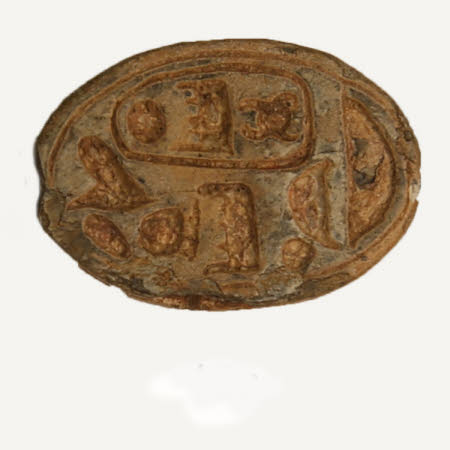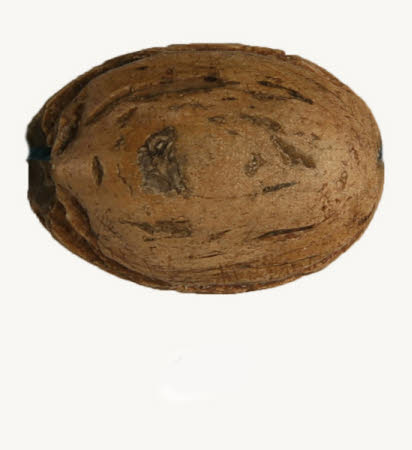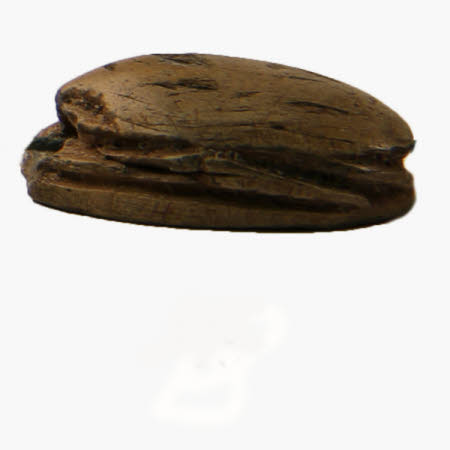Amulet
Category
Archaeological material
Date
1300 BC - 1101 BC
Materials
Faded blue glazed steatite
Measurements
8 x 16 mm; 23 mm (Length)
Order this imageCollection
Lanhydrock, Cornwall
NT 887680.5
Summary
An Egyptian amulet in the shape of a scarab beetle. The base displays a cartouche on the right, and pseudo-hieroglyphic signs on the left. The cartouche encloses three hieroglyphs that spell 'Menkheperra', the throne name of Thutmose III. This king, a great warrior, ruled c.1479 - 1425 BC and secured an empire that stretched from Syria to Sudan. He was remembered as a hero and amulets of later centuries still invoked him for protection. This one was probably made in the 13th or 12th century BC. Faded blue glazed steatite. All on a piece of blue string which is tied together. Information supplied by Marcel Marée , Assistant Keeper at the Department of Ancient Egypt & Sudan, British Museum, London.
Provenance
Probably acquired on transfer of the house to the National Trust. The family travelled extensively before WW1, Lord and Lady Clifden and the Hons. Mary Vere and Everilda visited Egypt for a week in October 1906 , and the Hon. Gerald Agar-Robartes, later 7th Viscount Clifden, who gave Lanhydrock to the National Trust in 1953, had a career in the Diplomatic Service from 1906-1930.


